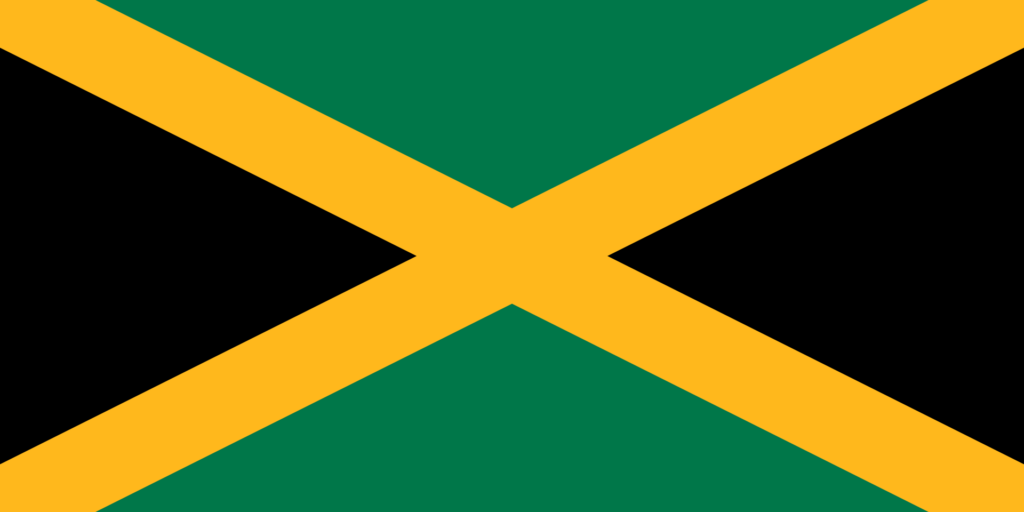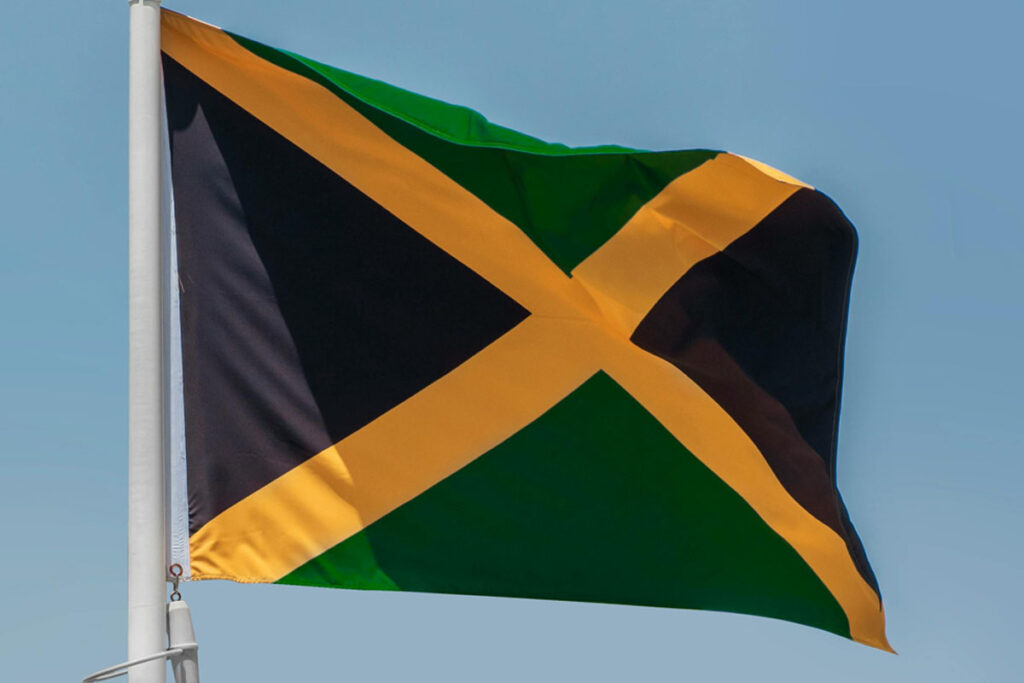As a child, I remember looking up with immense pride as the Jamaican flag fluttered in the wind. The black, green, and gold weren’t just colors to me, they symbolized something more. The flag represents independence and pride for nearly 3 million people.
But what do these colors truly mean? Let’s find out

The Origin of the Flag
The Jamaican flag was first unfolded on August 6, 1962 – the day that Jamaica gained its independence from Britain. It was designed by a committee from the Jamaica House of Representatives, after a competition hosted by the government failed to produce a suitable flag.
The initial flag was made of several rows of black, green and gold, but the design was found to be too similar to the flag of the nation Tanganyika, which is now apart of Tanzania.
So it was discarded and the design reworked into a new pattern.
The current flag has a diagonal cross with four triangles arranged in a north, south, east and west configuration. The cross is a golden yellow while the north and south triangles are green and the east and west ones are black.
Meaning of Jamaican Flag Colours?

For many Jamaicans, the symbolism of the flag is summed up by the phrase “Hardships there are but the land is green and the sun shineth”. This was the initial phrase from the committee that designed the flag in 1962.
In recent years however, the government agency, the Jamaican Information Service (JIS) thought it was necessary to promote a new interpretation of the flag, to avoid negative symbolisms of the colour black with hardships.
The current symbolism of the flag is thus “The sun shineth, the land is green and the people are strong and creative”.
Symbolism of the Colour Black
The initial meaning of the two black triangles in the Jamaican flag was “hardships overcome and to be faced”.
This was an ode to our turbulent history of colonization and enslavement by the Spanish and British colonial powers respectively.
It was also a remembrance of the battles fought and won – for freedom from enslavement in the year 1838 and for freedom from colonization later on in 1962. For the future, it meant our dedication to the improvement of our country but the recognition that there would be struggles for our newly created nation.
With the recommended change for the symbolism of the flag from the JIS in recent years, the black in our flag has come to symbolize “the strength and creativity of the people”.
Symbolism of the Colour Gold
The original meaning that was assigned to the golden cross by the 1962 committee was “natural wealth and beauty of sunlight”. This was later changed to the similar phrase “natural beauty of the sunlight and the wealth of the country”.
By extension the gold is a reference to the natural resources that our island is blessed with.
Among these were our bauxite exports and the beautiful golden sunshine which brought and continues to bring millions of visitors to the island on a yearly basis.
Symbolism of the Colour Green
“Hope and agricultural resources” was the initial and is also the current association of the green triangles within the flag. The hope is easily understood, as an island venturing out on its own as an independent state for the very first time would no doubt have great dreams for the future.
Jamaica was also coming from a place where our agricultural exports was one of our defining features as a colony. The importance of our agricultural resources as a potential source of income had a lot of precedence for our newly freed population.
Bonus Facts
The flag is an important symbol for our nation and should be treated as such. Listed below are a few of the protocols that must be observed when handling the national flag.
- The Jamaican flag should never used for decorative purposes on anything that is for temporary use and is likely to be discarded.
- The flag should never touch the ground and should not be flown during bad weather.
- During national or regional elections, the flag should be flown at polling stations during the day of voting.
- All foreign vessels entering Jamaican waters must fly the Jamaican flag in the rigging if their mast.
- In state funerals, the coffin is draped with a 12*6 Jamaican flag.
- A torn, faded or damaged flag should be replaced. The old one should be destroyed by burning it privately.